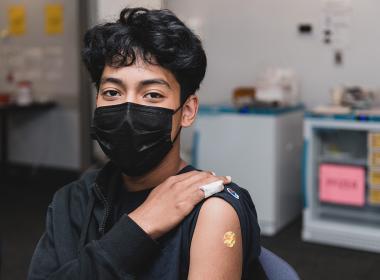Asthma (Emergency Department and Inpatient) Clinical Pathway In the United States, asthma affects 7 million children under 18 years. In 2010, 58.3% of children with asthma had at least one asthma attack in the previous twelve months. Nearly 20% of children diagnosed with asthma went to an ED for care in 2009. Asthma is the third¬ ranking
Blunt Liver and Spleen Injury Clinical Pathway Blunt abdominal trauma causing liver and/or spleen injury is one of the most common indications for hospital admission for injured children. In 2012, a pediatric trauma consortium, ATOMAC, developed a practice management guideline for blunt liver or spleen injury that is evidence
Brachial Plexus Palsy Management Clinical Pathway Brachial plexus palsies occur in about one in 1000 live births. Older literature quotes over 90% rate of recovery, however “recovery” has a broad definition that includes any reanimation of the limb. Recognizing secondary weakness and deformity, the actual recovery rate is closer
Bronchiolitis Clinical Pathway Bronchiolitis, a viral infection of the lower respiratory tract that primarily affects infants ages 0-24 months, is the most frequent cause of hospital admission for children under 1 year of age, accounting for upwards of 18% of all hospitalizations in the United States. At ~150
Burn Clinical Pathway Connecticut Children’s cares for patients with mild to moderately burns. Burn injury can vary in severity from superficial to partial thickness to full thickness. Connecticut Children’s has not had a standardized approach to care for these children in the past. A standardized
Evaluation and Management of Suspected Clostridium difficile (C. difficile) Infection Clinical Pathway Clostridium difficile is a significant infection that is becoming more common in children. Although most episodes can be treated with initial empiric first line therapies, some patients should receive a pre-emptive escalation of therapy. Further, when recurrence becomes an issue
Community-Acquired Pneumonia (CAP) Clinical Pathway Community-Acquired Pneumonia (CAP) is among the most common causes for hospitalization and is responsible for 124,000 hospitalizations annually. In 2011, the Pediatric Infectious Diseases Society and the Infectious Diseases Society of America released a clinical practice
Article
Is the COVID-19 Vaccine Linked to Heart Problems Like Myocarditis and Pericarditis in Young People? By Juan C. Salazar, MD, MPH, FAAP: This post was last updated on December 16, 2021. During the COVID-19 vaccine rollout, the CDC has kept a close eye on rare reports of heart problems in vaccinated young people. In addition to being rare, almost all of the cases have been mild. And COVID-19 infection remains a
Article
Are You Doing Tummy Time Correctly With Your Baby? By Kim Hrapchak, PT, MSPT: Do you dread tummy time? If your baby starts fussing the moment they’re belly-down, you might be tempted to cut it short, or skip it altogether. Stay strong! Tummy time is a really important exercise for your baby. Connecticut Children’s pediatric physical therapist Kim Hrapchak
Delirium Clinical Pathway Delirium is defined as an acute-onset neuropsychiatric syndrome characterized by disturbances of cognition, attention, consciousness or perception that is potentially life threatening. It is important to recognize that delirium is secondary to a medical etiology, not an isolated
Diabetes Insipidus (DI) Post-operative Neurosurgical Management Clinical Pathway Diabetes Insipidus (DI) refers to the passage of large volumes of dilute urine, and may result from the decreased secretion of antidiuretic hormone (ADH) by the posterior pituitary gland. Patients undergoing neurosurgical surgery in the sellar or parasellar region are at
Article
4 Things to Know About Heart Murmurs in Children By Seth Lapuk, MD: Up to three out of four kids will have a heart murmur at some point in childhood, but in most cases, it’s nothing to worry about. To explain more, Connecticut Children’s pediatric cardiologist (and American Heart Association leader!) Seth Lapuk, MD, joins the blog. 1. Most heart
Diabetic Ketoacidosis Clinical Pathway Diabetic Ketoacidosis (DKA) is a potentially fatal metabolic complication of uncontrolled diabetes mellitus. DKA consists of the biochemical triad of hyperglycemia, ketonemia and metabolic acidosis, resulting from absolute or relative insulin deficiency in the presence of an
Eating Disorder Clinical Pathway Eating disorders are increasingly prevalent in pediatrics and represent a complex interaction between medical and psychiatric manifestations. The need for a standardized approach is critical, due to the high risk of the condition (eating disorders have the highest mortality of
Esophageal Button Battery Management Clinical Pathway In the US, approximately 3,500 children are treated annually in emergency departments for button battery ingestion. Button batteries that are lodged in the esophagus have the potential to cause catastrophic thermal injuries. Quick recognition and removal of the battery leads to